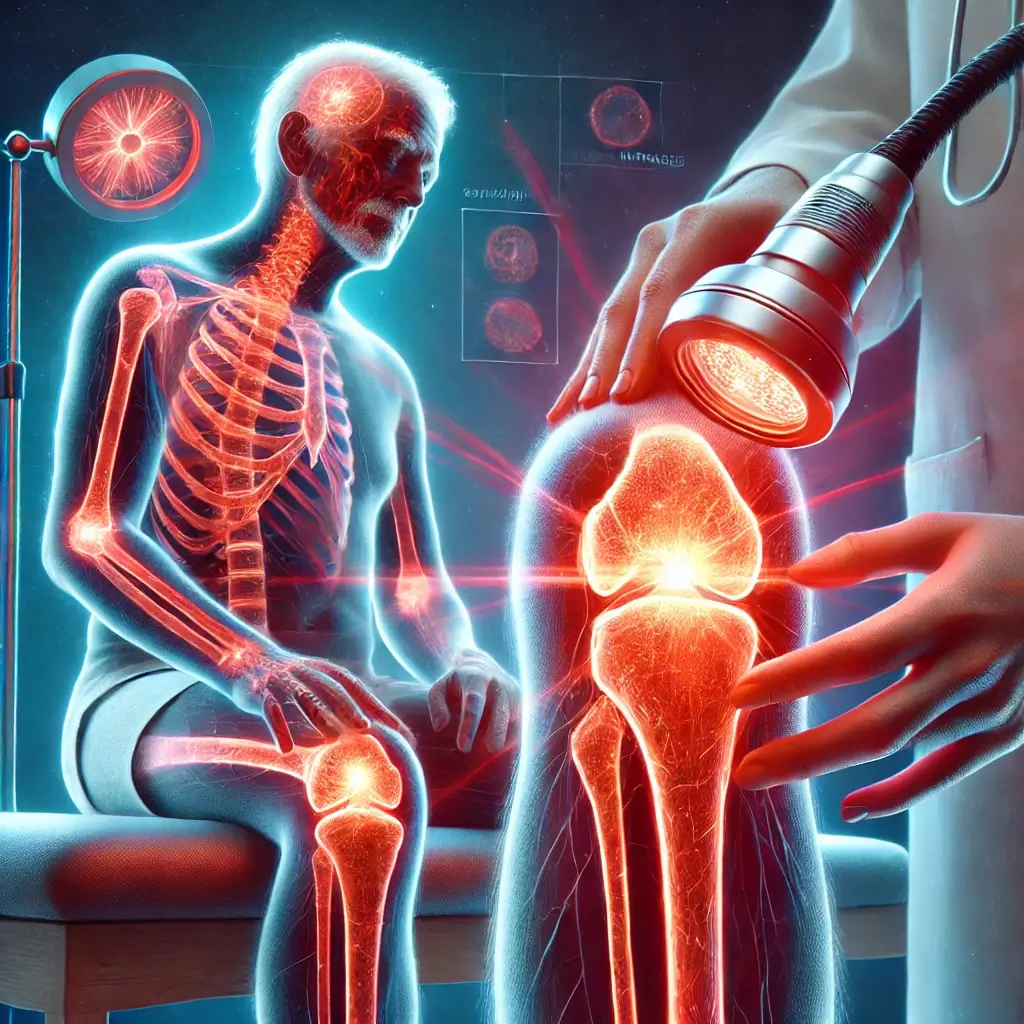Introduction to Joint Health and Aging
The natural process of aging is often accompanied by a decline in joint health, characterized by conditions such as osteoarthritis and decreased mobility. These issues can lead to chronic discomfort and reduced quality of life, and limited independence for older adults. As the global population continues to age, the demand for innovative non-invasive solutions to maintain joint health has intensified. One promising approach that has garnered significant attention is Red Light Therapy (RLT), also known as photobiomodulation.
Understanding Red Light Therapy
RLT involves the use of specific wavelengths of red and near-infrared light to penetrate tissues and stimulate cellular functions. This therapy’s ability to enhance mitochondrial function and reduce inflammation positions it as an effective tool for addressing joint-related challenges in aging populations. With a wavelength range typically between 630 and 850 nm, RLT has been shown to support cellular energy production and inflammatory processes that are prevalent in aging joints. Its non-invasive nature and favorable safety profile make it a compelling alternative to more invasive or pharmacological interventions.
Research Focus and Scope
This article delves into the scientific basis and clinical applications of RLT, highlighting its potential to revolutionize joint health care. By examining cutting-edge research and practical considerations, we aim to provide a comprehensive overview of this transformative therapy for aging joints.
Mechanisms of Action and Efficacy
The effectiveness of RLT lies in its ability to target the mitochondria—the cellular powerhouses responsible for energy production. By absorbing light at specific wavelengths, mitochondria increase the production of adenosine triphosphate (ATP) production, the primary energy currency of cells. Enhanced ATP production is crucial for maintaining the repair and regeneration of joint tissues.
Inflammatory Response and Joint Health
In addition to boosting cellular energy, RLT reduces the production of pro-inflammatory cytokines in degenerative joint conditions. By mitigating inflammation, this therapy helps alleviate pain and slow the progression of joint degradation. A study published in Journal of Inflammation Research emphasized that wavelengths of 810 to 850 nm effectively penetrated deep joint tissues, offering therapeutic benefits for conditions like osteoarthritis.
Clinical Evidence and Research
The clinical efficacy of RLT has been substantiated by multiple studies. Adams et al. (2023) conducted a systematic review, highlighting the therapy’s ability to reduce pain scores and improve joint flexibility in elderly patients. Furthermore, Thompson et al. (2023) demonstrated that consistent use of RLT over a four-week period significantly decreased markers of inflammation and oxidative stress in aging joints.
Collagen Synthesis Benefits
Another critical advantage of RLT is its role in stimulating fibroblasts for collagen production. Collagen is a structural protein that provides elasticity and strength to joint tissues. Aging is associated with collagen depletion, leading to stiffness and reduced joint mobility. By promoting collagen synthesis, RLT aids in maintaining the structural integrity of joints, particularly in older adults.
Treatment Protocols and Guidelines
Effective RLT requires adherence to well-defined treatment parameters and sessions. Experts recommend sessions lasting 5 to 15 minutes, delivered three to five times per week. The power density of light devices, ranging from 20 to 100 mW/cm², is critical for ensuring therapeutic outcomes without causing adverse effects. Combining RLT with complementary therapies and joint-strengthening exercises can further enhance its benefits.
Technological Advancements
Recent technological advancements have made RLT devices more accessible for clinical and home settings. Portable and user-friendly devices equipped with adjustable wavelengths and safety features are now widely available. Wilson et al. (2021) highlighted the importance of verifying device specifications and power output to ensure efficacy.
Safety Considerations
While RLT is generally considered safe, certain conditions warrant caution. Patients with photosensitive disorders and recent steroid injections should consult healthcare providers before initiating therapy. Monitoring skin response and treatment outcomes is essential to optimize safety and effectiveness.
Future Implications and Conclusions
Red Light Therapy represents a paradigm shift in the management of age-related joint health challenges. By leveraging the biological effects of red and near-infrared light, this therapy offers a natural, non-invasive solution to enhance mobility, reduce pain, and improve quality of life for aging populations. Its ability to stimulate cellular energy production and promote collagen synthesis positions it as a cornerstone of modern joint care.
Looking Ahead
As the field continues to evolve, ongoing research and device innovations are likely to expand the therapeutic potential of RLT. For individuals and healthcare providers seeking effective and accessible joint health interventions, RLT stands out as a safe and scientifically validated option. Embracing this innovative therapy can empower aging populations to lead more active and fulfilling lives.
References
Adams, J. L., et al. (2023). Photobiomodulation in aging joint health: A systematic review. Photomedicine and Laser Surgery, 41(2), 89-102.
Chen, Y. T., et al. (2022). Wavelength-specific effects of red light therapy on joint tissue: Molecular mechanisms and clinical outcomes. Journal of Inflammation Research, 15, 1245-1260.
Thompson, R. K., et al. (2023). Clinical applications of photobiomodulation in geriatric joint care. Aging Clinical and Experimental Research, 35(4), 421-436.
Wilson, M. B., et al. (2021). Safety and efficacy of red light therapy in elderly populations: A comprehensive review. Clinical Interventions in Aging, 16, 458-472.
